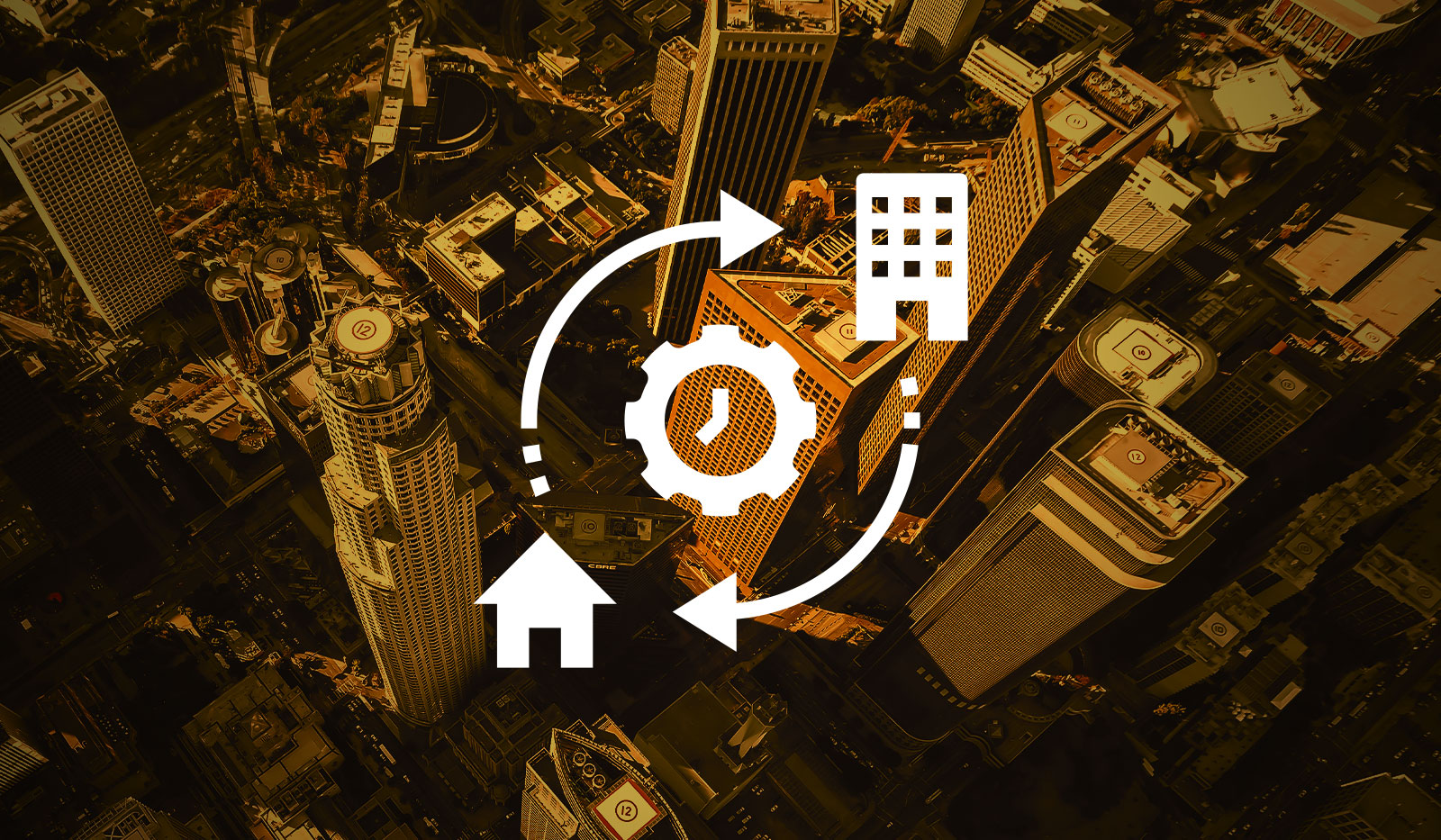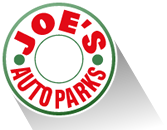
How shifting work patterns are transforming Downtown Los Angeles’ economy, real estate, and urban experience in the hybrid era.
For decades, Downtown Los Angeles stood as the beating heart of the region’s business, cultural, and social activity. Towering office buildings, a bustling financial district, and a vibrant mix of industries defined the city’s daily rhythm. Each morning, professionals flooded DTLA—commuters packed into the Metro, freeways clogged with traffic, and coffee shops brimmed with hurried customers. By evening, the workforce dispersed, leaving behind a quieter landscape, soon replaced by nightlife seekers and eventgoers. This predictable cycle shaped DTLA’s economy, infrastructure, and energy.
That rhythm has changed.
The rise of hybrid work has upended the traditional five-day, in-office model, fundamentally altering how, when, and why people engage with DTLA. Office attendance is no longer a given; workers split their time between home and workplace, while others rely on remote-first schedules. Peak commuter traffic fluctuates, with Tuesdays and Wednesdays emerging as the busiest office days while Mondays and Fridays see notable lulls. Businesses once dependent on consistent foot traffic must adapt to a workforce that has become unpredictable.
This shift marks a structural transformation, with consequences that stretch across DTLA’s economy, real estate market, transit system, and community life. Some industries thrive under this new model, while others struggle to redefine their place in a downtown that no longer follows a uniform rhythm. Landlords rethink office space, public transit recalibrates, and restaurants revise their hours as entire neighborhoods reshape themselves.
Evolution of Work Patterns
Downtown Los Angeles once operated on a steady, predictable schedule. The traditional workweek dictated the city’s flow—morning rush hours brought a surge of office workers, and by evening, the streets emptied as commuters headed home. Businesses, public transit, and city infrastructure all catered to this fixed rhythm.
Hybrid work has fractured this structure. Instead of a five-day workweek spent entirely in the office, professionals now split their time between home and workplace, creating new patterns of movement. Midweek has emerged as the busiest period, as companies designate these days for in-office collaboration. Mondays and Fridays often feel closer to weekends, with fewer workers making the trip downtown.
Public transit usage has seen dramatic shifts. Metro ridership, once tied to rigid morning and evening rushes, now experiences irregular peaks and lulls. Traffic congestion follows a similar pattern—less intense on hybrid-heavy days but still significant on peak in-office days. Ride-share services see an uptick in midday trips as remote and hybrid workers move between meetings, workspaces, and social gatherings.
Commercial Real Estate Transformation
The hybrid work revolution has reshaped the demand for office space in DTLA. Once a highly competitive market where companies sought long-term leases in towering high-rises, DTLA’s office sector now navigates a period of contraction and reinvention.
Many businesses have downsized their office footprints, opting for smaller, more efficient spaces that align with hybrid schedules. Large-scale corporate leases have given way to shorter terms and more flexible agreements. The vacancy rate has climbed, leaving landlords to make their properties more appealing in an era where full-time office attendance is no longer standard.
Flexible office spaces and co-working hubs have grown rapidly in response. Spaces offering short-term leases, shared meeting rooms, and hybrid-friendly amenities attract businesses that no longer need dedicated headquarters but still require occasional physical presence. Meanwhile, landlords and developers find creative ways to repurpose vacant office buildings, converting some into mixed-use developments that blend office, retail, and residential spaces.
Business Adaptation and Community Growth
Local businesses have reimagined their operations to serve an unpredictable customer base. Restaurants adjust by reducing breakfast service and refocusing on lunch and dinner crowds during peak in-office days. Coffee shops adapt to quieter Mondays and Fridays but heavier midweek traffic. Retail has shifted toward experiential offerings—stores designed as destinations rather than quick stops.
The evening and weekend economy has gained importance. With fewer daily workers, businesses find new opportunities in attracting residents, tourists, and weekend visitors. Bars and restaurants introduce midweek social events, while entertainment venues capitalize on hybrid schedules by offering programming that caters to a more flexible workforce.
As hybrid work reshapes Downtown Los Angeles, more professionals choose to live where they work. Developers and city planners reimagine DTLA’s urban fabric, creating spaces where living, working, and leisure intersect. Repurposed office buildings transform into modern apartments and lofts, while mixed-use developments integrate residential units with co-working spaces and amenities.
Cultural and Social Evolution
The transformation extends beyond physical spaces to reshape how people interact with the city and each other. Traditional networking events have evolved into intentional, curated gatherings. Companies invest more in off-site team building, while professionals meet at co-working spaces, hotel lounges, and rooftop patios that double as professional and social hubs.
Public spaces adapt to support hybrid workers, with city planners introducing outdoor workstations, Wi-Fi-enabled green spaces, and interactive installations that transform underutilized areas into vibrant community spaces. Arts, entertainment, and nightlife venues adjust their programming to serve an audience no longer bound by traditional office schedules.
Joe’s Auto Parks: Supporting DTLA’s Evolution
As DTLA adapts to hybrid work patterns, Joe’s Auto Parks continues its vital role in the city’s infrastructure, ensuring seamless mobility for workers, residents, and visitors alike. With commuter patterns becoming less predictable, parking demands have shifted, requiring innovative solutions that match the flexibility of today’s workforce.
Joe’s Auto Parks meets these evolving needs through expanded offerings that include flexible parking solutions, catering to professionals who no longer require full-time monthly passes but need reliable parking on in-office days. Strategic facility locations near key office buildings, retail centers, and entertainment districts ensure both occasional commuters and frequent visitors can easily access all that DTLA offers.
Beyond traditional parking services, Joe’s Auto Parks strengthens the DTLA community through technological innovation and sustainability initiatives. Contactless payment systems and EV charging stations modernize the parking experience, while partnerships with local businesses and event organizers help foster downtown’s economic vitality. These collaborations support large-scale events and provide seamless parking solutions for major venues, contributing to DTLA’s continued growth as a cultural and entertainment destination.
Looking Forward
This transformation presents both challenges and opportunities. While businesses must adapt to less predictable patterns, DTLA has the chance to reinvent itself as a model for hybrid-friendly urban living. Success requires collaboration among businesses, policymakers, and residents to ensure downtown remains a thriving center for work, culture, and commerce.
Hybrid work is not a passing trend but a new reality. How DTLA embraces this shift will determine its future. By leaning into change rather than resisting it, the city has the potential to emerge stronger, more adaptive, and more vibrant than ever before. Now is the time to shape the next chapter of DTLA’s story.

Comments are closed.